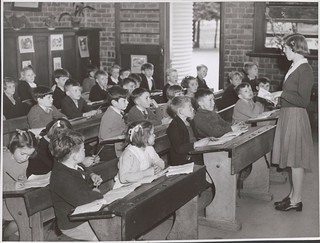Adele Herron, Chloe Connor, Erin McGlynn and Megan Shearer
Although the term ‘scientific literacy’ may seem quite simple, it has become evident through research and discussion that it much more than just having knowledge of a lot of science. Scientific literacy is the capacity to use scientific knowledge to identify questions and to draw evidence based conclusions.
John Durant believes there are three separate definitions for scientific literacy, however they each have the similar opinion that all non-scientists surrounded by some form of science or technology, which we all are today, should know something about science. Each of the three definitions emphasise important aspects of science – the first includes your scientific knowledge; the second highlights the importance of the scientific method or procedures, whether it be mental or physical procedures; and his final definition focusses on scientific culture. According to Miller (1996), we as people of a majority modern society live in this technological and scientific culture that was also mentioned by Durant and are therefore science significantly impacts us daily.
Hurd (1998) however bases his definition on seven different dimensions.
(1) Understand the nature of scientific knowledge;
(2) Apply appropriate science concepts, principles, laws, and theories in interacting
with his universe;
(3) Use the process of science in solving problems, making decisions, and furthering
his own understanding of the universe;
(4) Interact with values that underlie science;
(5) Understand and appreciate the joint enterprises of science and technology and the
interrelationship of these with each and with other aspects of society;
(6) Extend science education throughout his or her life;
(7) Develop numerous manipulative skills associated with science and technology.”
As demonstrated, there is no clear definition of the term scientific literacy, and has been and will continue to be interpreted in different ways.
However, what happens when there is a lack of scientific literacy? Take, for example, the controversy surrounding the Measles, Mumps and Rubella (MMR) vaccination in 1998. Dr Andrew Wakefield – a renowned gastroenterologist – released findings from his research that suggested a link between the MMR vaccine and autism and problems with the bowels (Smith, 2010). Despite the fact his research involved only 12 children, his findings made front page news. This resulted in a decline in the uptake of the vaccine – dropping to under 80% nationally and in some areas dropping to 60% uptake (BBC, no date; Smith, 2010). Due to this, cases of Measles increased – Britain having its first death from measles in 14 years – and Mumps grew to epidemic level in 2005 (Smith, 2010). In June 2006, it was announced that Wakefield was under investigation from the General Medical Council for alleged misconduct (Smith, 2010). The Sunday Times, in 2009, revealed that Wakefield had been paid by lawyers to create findings which would go against the 3 in 1 vaccination and had changed some of the results of his tests (Deer, 2009; Deer, 2011). Wakefield had used his knowledge and scientific literacy in an unethical way and had caused many children in our population to become seriously unwell, because of his incorrect findings. In 2015, it had been reported that there was no link between the vaccination and autism in children, after a study on 95,000 children which discredited Wakefield’s research (Boseley, 2015).
How is teaching fair testing in school science linked to scientific literacy?
When carrying out an experiment in a science lesson it is important that it is a fair test. This has to be done to ensure that the experiment is reliable and therefore, has the ability to have conclusions drawn from it. In order to conduct a fair test it is important that only one factor (variable) is changed and that all other factors and conditions are kept the same and as identical as possible. An example of a test could be measuring the speed of toy cars when moving down a hill. In order for this to be considered a fair test all variables including the gradient of the hill, the time they cars are let go and the way in which they are let go should all remain the same, the only factor which should change should be the car itself. This ensures that your test is fair and reliable.
The topic of fair testing when teaching science is very important as, children must ensure that each experiment they carry out is fair. Fair testing is a basic area of knowledge within science that children must know about in order to continue and progress onto more challenging things within the curricular subject.
Scientific literacy is all about using scientific knowledge to draw evidence-based conclusions. Therefore, fair testing is very much a part of this process as it is a necessary procedure used when gathering information and evidence from experiments. Also the ability to carry out a fair test is very much a scientific skill in its self which is fundamental, in order to progress in the subject of science.
References
BBC. (No date) Does the MMR Jab Cause Autism? Available at: http://www.bbc.co.uk/sn/tvradio/programmes/horizon/mmr_prog_summary.shtml (Accessed: 10 February 2016)
Boseley, S. (2015) No link between MMR and autism, major study concludes. Available at: http://www.theguardian.com/society/2015/apr/21/no-link-between-mmr-and-autism-major-study-concludes (Accessed: 10 February 2016)
Deer, B. (2009) MMR doctor Andrew Wakefield fixed data on autism. Available at: http://www.thesundaytimes.co.uk/sto/public/news/article148992.ece (Accessed: 10 February 2016)
Deer, B. (2011) The medical establishment shielded Andrew Wakefield from fraud claims. Available at: https://www.theguardian.com/science/blog/2011/jan/12/andrew-wakefield-fraud-mmr-autism (Accessed: 10 February 2016)
Durant, J (1994). What is scientificc literacy?. European Review, 2, pp 83-89 doi:10.1017/S1062798700000922
IJESE, 2009 Scientific Literacy and Thailand Science Education http://www.acarindex.com/dosyalar/makale/acarindex-1423903863.pdf (Accessed 13th February 2016)
Smith, R. (2010) Andrew Wakefield – the man behind the MMR controversy. Available at: http://www.telegraph.co.uk/news/health/news/7091767/Andrew-Wakefield-the-man-behind-the-MMR-controversy.html (Accessed: 10 February 2016)

 So yeah, change of plan. This is what I’m writing about for the time being.
So yeah, change of plan. This is what I’m writing about for the time being.
